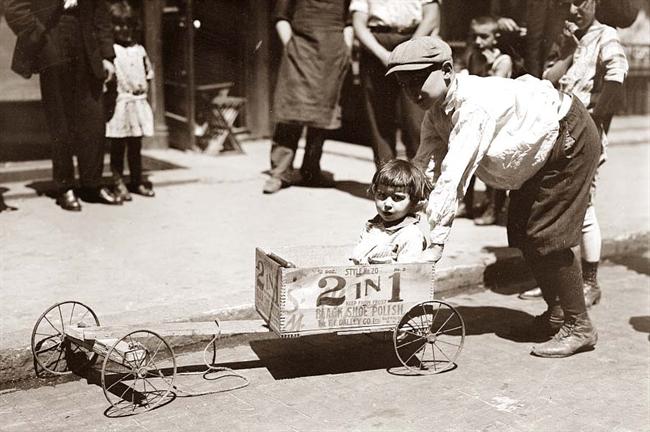Soap Box Derby — Life Imitates Art
Posted on April 30, 2010 at 3:49 pm
 It bills itself as “The Greatest Amateur Racing Event in the World!” But the Soap Box Derby, once a popular event with racers, spectators, and sponsors, has, well, gone downhill. It began during the Depression and now has races across the country. Children from 8-17 build their cars, which operate through gravity only, no engines. They compete locally and the champions come to Akron, Ohio to compete for prizes and scholarships.
It bills itself as “The Greatest Amateur Racing Event in the World!” But the Soap Box Derby, once a popular event with racers, spectators, and sponsors, has, well, gone downhill. It began during the Depression and now has races across the country. Children from 8-17 build their cars, which operate through gravity only, no engines. They compete locally and the champions come to Akron, Ohio to compete for prizes and scholarships.
The Wall Street Journal reports that
kids today are more likely to play video games than to tinker in the garage with power tools. And audiences have other distractions. The annual race, held in July, once drew crowds of more than 50,000; last year it attracted only 15,000 people paying $5 at the gate.
The erosion of corporate support, however, has been crippling. In the heyday of the derby, in the 1960s, Chevrolet sponsored and promoted the race. Over the years, big corporate backers brought celebrities, including Ronald Reagan, Rock Hudson, Evel Knievel, and O.J. Simpson. The late actor Jimmy Stewart attended six times.
With the last corporate sponsor pulling out, the Derby was in trouble. It was sued by its bank. There was a temporary reprieve when its home town of Akron guaranteed the debt. And then, just like in a movie, a hero arrived. And just like in a movie, it was not the hero you’d expect. It was Corbin Bernsen, the actor best known for playing sleazy litigator Arnie Becker on “L.A. Law.” Bernsen wanted to help, and decided to make a movie about the Soap Box Derby, with a part for himself as a one-time champ who steps into to help a boy whose father was killed in Afghanistan. In the movie, called “25 Hill” and scheduled for release next year, the boy finds a sponsor. In real life, GEICO, the sponsor signed up by Bernsen for the movie has signed on to sponsor the race as well. 



